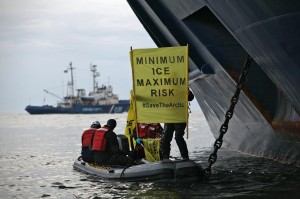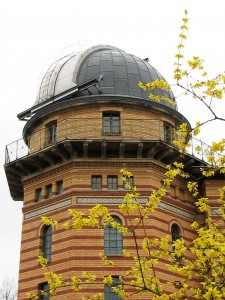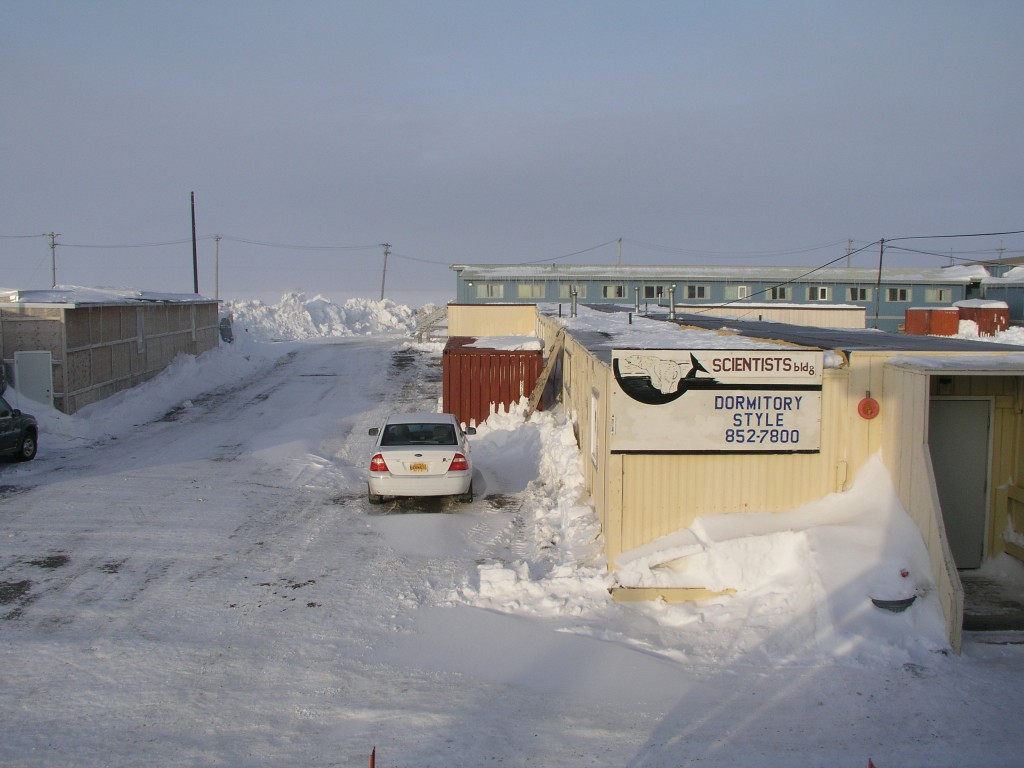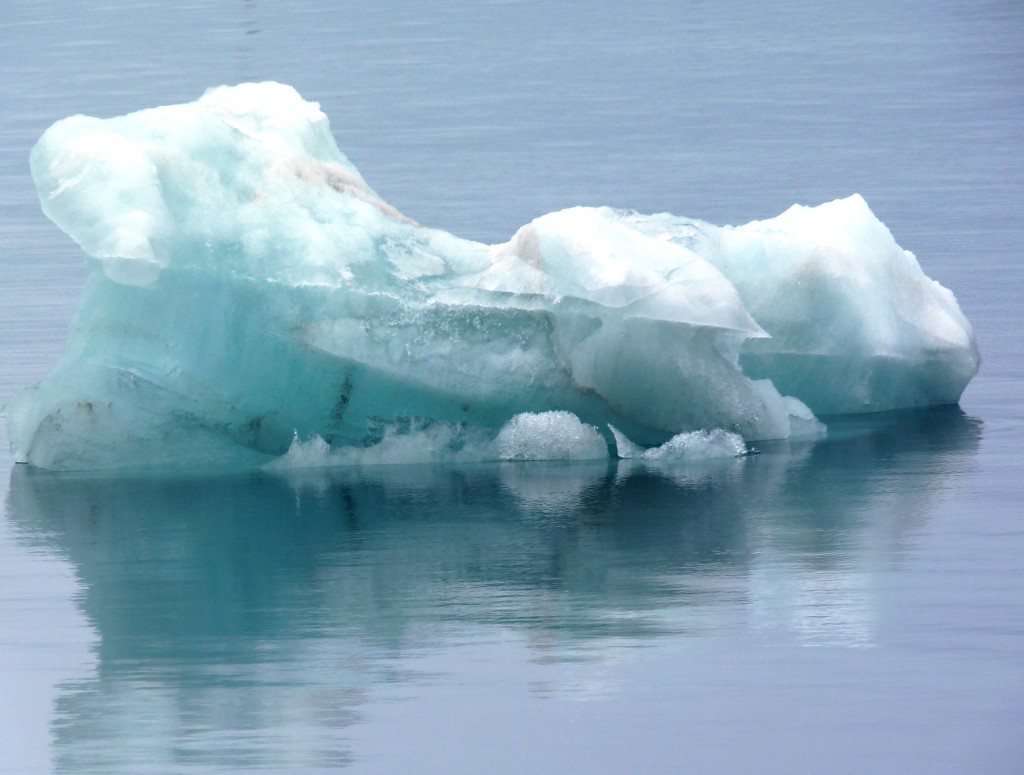WWF: human-bear conflict increasing
Hungry polar bears under pressure from climate change are increasingly coming into conflict with people in some regions, said experts at a WWF Workshop in Tromso, Norway, this week. The meeting called on governments to work together to finance and implement ways to keep both bears and people safe.
30 experts from different Arctic regions agreed the polar bear range states – Canada, Norway, Greenland, Russia and the United States – should cooperate to fund, monitor and share conflict reduction measures.
WWF polar bear lead Geoff York said “As sea ice habitat continues to decline, more bears will spend longer periods of time onshore and human activities are also projected to increase in the area, setting the stage for trouble in the years ahead”.
There is a “Range States polar bear conflict working group”. It was also present at the workshop and said it will be presenting a new data tracking system and draft conflict plan at the next meeting of the “Polar Bear Range States” meeting which will be held in Moscow in the autumn.
WWF has designated 2013 as the Year of the Polar Bear and is calling on the countries involved to make firm commitments at the meeting.
So how do you reduce conflict, when bears are hungry and humans in close proximity to areas where they hunt for food? The workshop participants shared ideas including polar bear patrols to help keep bears away from communities, safe storage and disposal of food and rubbish, education on safety measures, deterrents from bear spray to fences and dealing with “problem bears”.
The Ice Blog recently drew attention to a successful project in Canada, which has reduced conflict between bears and locals.
Polar bears are also on the agenda at the CITES meeting in Bangkok at the moment, running until March 14th. The USA is trying to get the bear switched to Appendix I of the convention, which would ban trade in all but “exceptional” circumstances.
This is a different aspect of “polar-bear conflict” and difficult because of traditional hunting practices in some areas. The Economist has an interesting summary in Polar Bear Politics.
Shell puts Arctic drilling on hold
Shell has said it will not drill for oil in the Alaskan Arctic this year. The announcement was not surprising, as the company is facing official US investigations after a series of problems, culminating in the grounding of the Kulluk drilling ship in a storm late last year. The company announced earlier this month that its two Arctic offshore rigs would be going to Asia for repairs and upgrades. Critics say oil drilling in Arctic regions is too risky and there is not sufficient capacity to cope with an oil accident in the remote region with its extreme weather conditions and fragile ecosystem.
Environment campaigners welcomed the announcement. Reuters quotes Michael LeVine from Oceana in Juneau, Alaska, as saying both Shell and the government agencies regulating the company faced a “crisis of confidence”. He says the decisions to allow Shell to operate in the Arctic Ocean were premature. Phil Radford, Executive Director of Greenpeace USA issued a statement saying:
“Shell was supposed to be the best of the best, but the long list of mishaps and near-disasters is a clear indication even the ‘best’ companies can’t succeed in Arctic drilling. Secretary Salazar and President Obama gave drilling a chance; now the responsible decision is to make Arctic drilling off limits, forever.” Shell has collected more than 2.7 million signatures for their “Save the Arctic” campaign.

I interviewed Greenpeace “Save the Arctic” campaigners including Lukas as they collected signatures in Bonn, Germany, last year.
However, the announcement does not mark the end of Arctic drilling plans. ConocoPhillips reaffirmed on Wednesday that it would continue with its own plans to drill one or two exploration wells in the Chukchi Sea in 2014, and expected to submit more information on it to the federal regulator by the end of March. Marvin Odum, director of Shell Upstream Americas, stressed this was only a temporary break in his group’s Arctic activity: “Our decision to pause in 2013 will give us time to ensure the readiness of all our equipment and people.”
Business opportunities boom in the Arctic
Climate change causes extreme weather
Human-triggered climate change has been the cause of a lot of the recent extreme weather across the globe, according to a new scientific study. A team from the Potsdam Institute for Climate Impact Research (PIK) says it has found a physical cause common to events such as the 2011 heat waves in the USA, the 2010 Russian heat wave or the floods in Pakistan in the same year. The scientists, whose study is published in the US journal Proceedings of the National Academy of Sciences this week, say climate change is affecting the movement of air around the northern hemisphere, resulting in extreme conditions. Lead author Vladimir Petoukov says: “An important part of the global air movement in the mid-latitudes of the earth normally takes the form of waves travelling around the planet, oscillating between the tropical and the Arctic regions. When they travel upwards, these waves suck warm air from the tropics to Europe, Russia, or the USA; when they dip downwards, they do the same with cold air from the Arctic. We found that during several recent extreme weather events, these waves virtually froze and remained unchanged for weeks. Instead of bringing in cool air after warm air, the heat just stays. ”
The mechanism is a complex one and the report is not easy reading. I can recommend a summary produced by Alex Kirby for the “Climate News Network“.
PIK’s director Hans Joachim Schellnhuber, a co-author of the study, describes it as a breakthrough, but stresses there are other factors involved in extreme weather events as well as climate change. However, he and his colleagues say the physical process they have identified helps to explain the increasing number of weather extremes and provides a mechanism to explain a link between climate change and extreme weather.
USA announces new five-year Arctic Research Plan
The US administration’s National Science and Technology Council has released a plan outlining key areas of study to be taken by the Federal government to better understand and predict environmental changes in the Arctic. The plan was developed by a team of experts representing 14 federal agencies and was based on input from sources including the indigenous Arctic communities, the Alaska Governor’s Office, local organizations and universities. It highlights research areas important for the development of national policies and areas which would benefit from cooperation between various agencies. Amongst the topics identified for focus are regional climate models, human health studies and adaptation tools for communities.
The announcement is a significant one in the view of the US Arctic Research Commission. They say it is “probably the first, truly integrated, five year US Arctic Research Program plan (ever?) released.”
Incidentally, the website of that particular organisation is a useful source for anybody following Arctic developments.
UNEP concerned about Arctic melt
The UN Environment Programme (UNEP) has issued a warning that last year’s record shrinkage of the Arctic sea ice highlights the risks climate change brings for the planet. The annual review of the state of the world’s environment was presented in Nairobi this week during an ongoing high-level ministerial meeting.
UNEP said the summer sea ice in the Arctic had covered a record low area of 3.4 million square kilometers, 18 percent below the previous recorded minimum in 2007 and 50 percent below the average for the 19802 and 1990s. The report also mentions melting land ice in Greenland and melting permafrost in high latitudes. The figures are not new, but it is significant that UNEP should highlight the Arctic and the fact that no action is being taken in reaction to the evidence which clearly shows climate-change-induced melting.
“Changing environmental conditions in the Arctic, often considered a bellwether for global climate change, have been an issue of concern for some time, but as of yet this awareness has not translated into urgent action”, UNEP Executive Director Achim Steiner said presenting the report on Monday. He warned that the rush to extract oil and gas from the Arctic seabed as the ice retreats could lead to even higher emissions of greenhouse gases.
“What we are seeing is that the melting of ice is prompting a rush for exactly the fossil-fuel resources that fuelled the melt in the first place”, said Steiner.
Now this is a sentiment Greenpeace, WWF Arctic and other groups have been expressing for years. Here we have it from the world’s key environment watchdog.
“The rush to exploit these vast untapped reserves has consequences that must be carefully thought through by countries everywhere, given the global impacts and issues at stake”.
Meanwhile, this week, Russian President Vladimir Putin signed the country’s “strategic program on Arctic development up to 2020. Enough said?
For anyone who wants to catch up on the Arctic development story, here are a few links.
Polar ice sheets melting faster than ever
Business opportunities boom in the Arctic
Sea levels rising faster than expected
China’s Arctic ambitions spark concern
Energy giants cooperate for Arctic resources

























Feedback